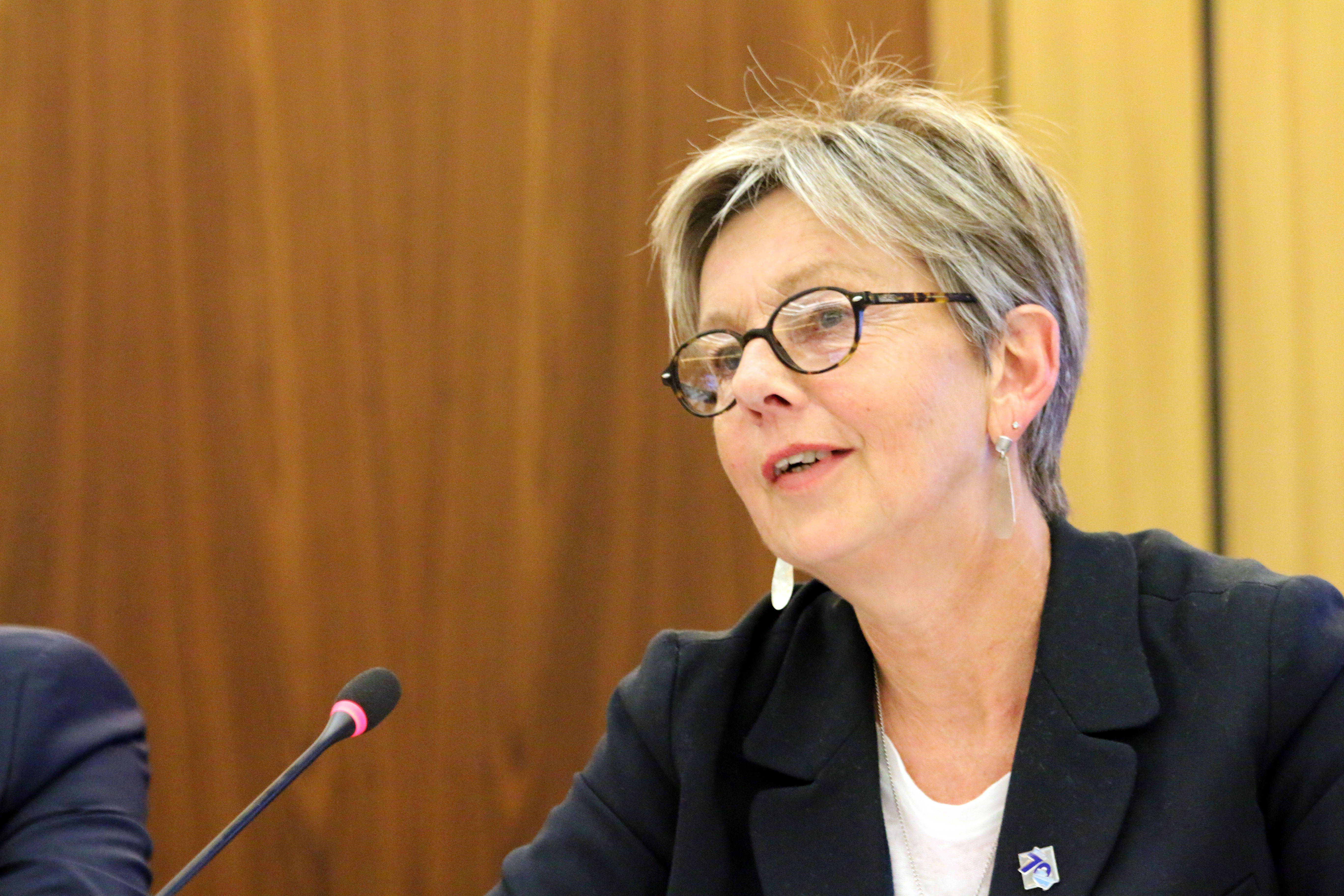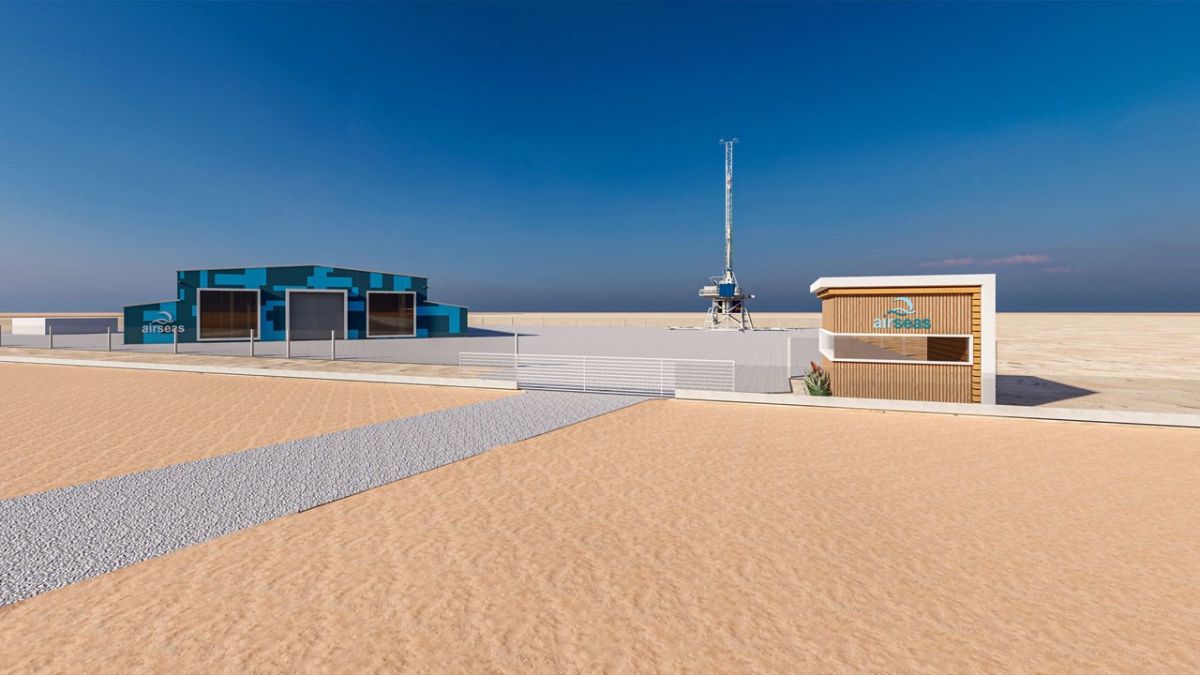Di Gilpin is on the way to seeing one of her dreams come true. For the last decade, and maybe longer, she has been a staunch and vocal supporter of the use of wind power in shipping. This is not the voice of a dreamer, environmental campaigner or of an eco-evangelist believing she can save the world single-handed. Gilpin is anything but a dreamer. She has spent time in the formula one racing bubble and even in competitive round the world yacht racing.
For her the impossible is possible. Getting wind-propulsion back onto ships is not only a possibility, but in her mind it is a necessity. “It’s about asking the right questions to the right people at the right time,” she says about her enduring tenacity and drive. Gilpin has been on the conference circuit for many years talking about the potential for sail, first with B9 shipping, and now with the Smart Green Shipping Alliance. It is with SGSA that she has found a partnership that will see her belief that a special rig sail system can be designed for a commercial application and see the light of day.
Her belief and enthusiasm and bustling energy are contagious, and her answers to all the questions about the commercial realities of novel technologies are believable. Industry professionals following maritime cleantech developments will be aware of the range of ongoing wind-assist projects that are being realise. There’s the Norsepower and Anemoi flettner rotor systems on a handful of ships, and of course the kite systems developed first by Skysails in Germany and now being developed for the vessels transporting Airbus aircraft parts.
Details of some of the projects can be read in an earlier Fathom.World article here.
What Gilpin knows is that the cargo owners need to be part of the answer, a fact that many in the cleantech industry are growing acutely aware of. And cargo owners are beginning to take a vested interest, they are stepping up and being part of the answer. Cargill, Heidelberg, Airbus have all recognised their influence here. For Gilpin’s SGSA the relationship is with the British energy company Drax, a company with the UK’s largest biomass power plant having converted 2/3 of a coal fired-plant to use renewable resources. Drax and Gilpin’s SGSA are working with designers Humphry’s Yacht Design and the drybulk owner Ultrabulk in Denmark.
It may be seem odd to see a yacht designer working alongside an operator of capesize drybulk vessels, but the aim is to adapt the rigid sails seen on the top-level ocean-going racing yachts into a commercially successful design, but the power behind some of these near-rigid sail designs are what Gilpin believes can be turned to commercial gain. This year will see the completion of the first step towards a working demonstration on an Ultrabulk vessel. Designs and prevailing wind conditions are being assessed for this initial project
But Gilpin’s goal is not to have a demonstration project see the light of day. She wants to be able to have a solution that can be applied to any vessel, and in order to achieve that her goal also includes the financing model. She needs not only shipowner and cargo owner buy in, but eventually insurers and financial institutions will need to be brought to the table to find a suitable structure to make it convenient for shipowners to either retrofit or install onto newbuildings. Gilpin does not have the answer to all these questions yet, but she knows she will and she knows when to get them.

The international shipping industry is on a new road, a road to see the global fleet cut its fleet by 50% (Based on the 2008 emission statistics) by 2050, and then to totally decarbonise by the end of the century. While those deadlines in 31 and 81 years may be beyond the lifetime of many already working in the industry, it is not for those soon to be coming into the sector, our next generation.
There are a range of solutions being tried out in the industry. Battery power technology has advanced significantly over the last five years to a point where small and now medium size ferries are being built using energy storage exclusively, while larger vessels are being built with large battery rooms allowing engines to be run optimally (peak shaving with the batteries recharged off the engines). Interest in hydrogen has grown significantly, as has interest in other fuels such as ammonia and methanol which have the potential to be made from renewable sources.
Liquid natural gas has become a significant stepping stone over the last 19 years since the first LNG-fuelled ferry was built in Norway. But for Gilpin wind propulsion or wind assist solutions are clearly part of the answer. Her argument that the wind is not going to stop blowing and is free is hard to deny.
But in what form this solution will take has yet to be seen. Due to patent issues, Gilpin is keeping her sail rig design under wraps for the time being, the only available images rough artistic sketches that give little away. Even this is something she is reluctant to do. If people are serious about decarbonisation and about creating a sustainable clean industry then they need to have tools that are good for all in society.
But for the time being, with her business hat on, she wants to prove the commercial value of her wind assist solution and to do that she needs to prove her business model can work. That calls for the winds of change.
ENDS
































